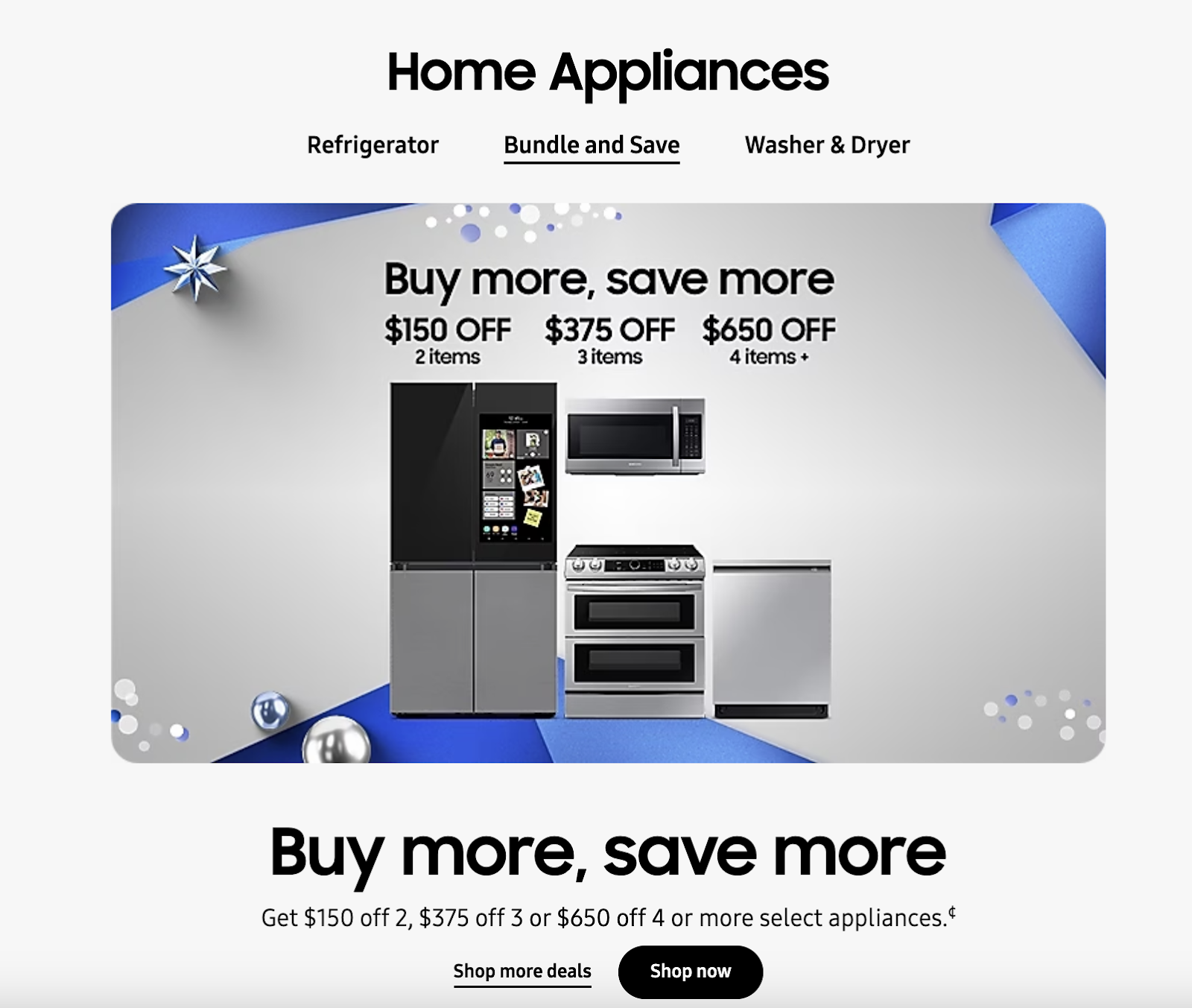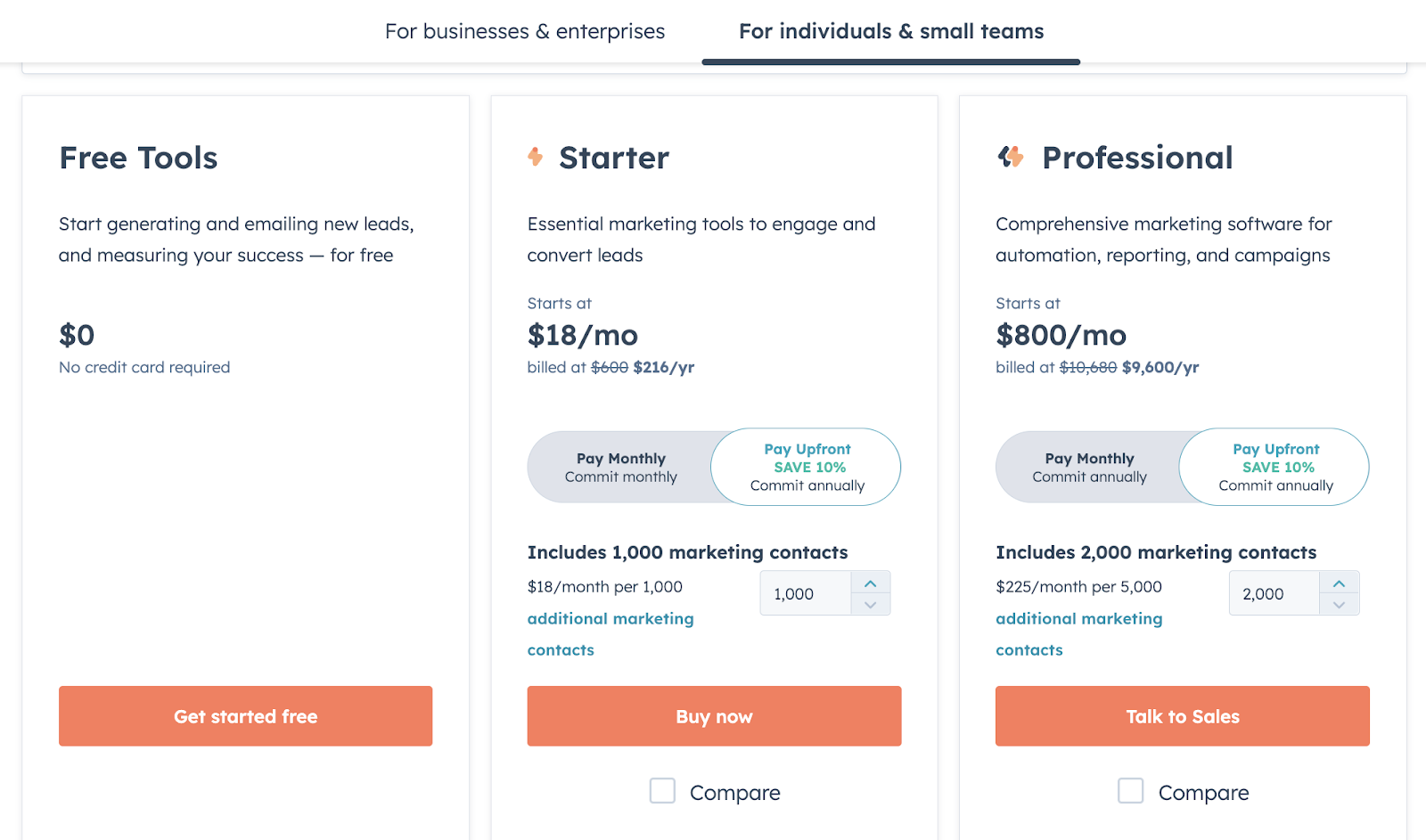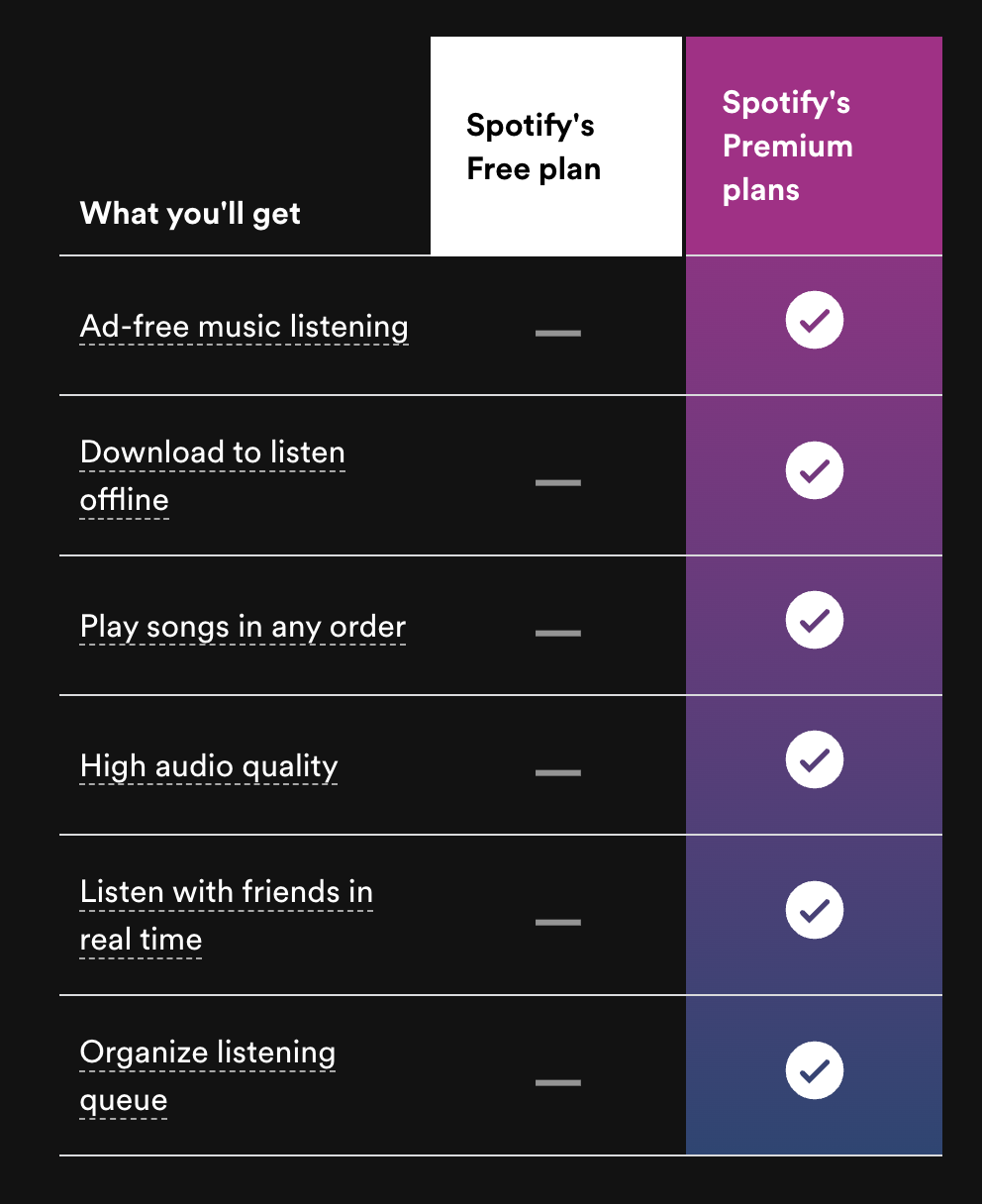4 Upselling Examples to Increase Sales in 2023
We overview some examples of upselling that can help your business boost sales and improve customer LTV.
We overview some examples of upselling that can help your business boost sales and improve customer LTV.
Upselling is a common sales technique that involves offering a more expensive version of a product or service while a customer is in the process of making a purchase. It may also include offering premium complementary products that improve the functionality of the original purchase and increase the customer lifetime value (CLV).
Almost all (91%) salespeople use upselling techniques, which contribute to an average of 21% of company revenue. It’s a different technique to cross-selling, where a business recommends add-on products related to a previous purchase. These products usually don’t have a high profit margin but they still improve CLV.
To successfully upsell your customers and maximize your average order value, take inspiration from these 5 upselling examples from leading brands.
Successful upselling requires careful preparation. Approaching it without a solid strategy runs the risk of alienating customers. Here’s how companies such as Turkish Airlines, Spotify, and Google use upselling in an organic way that prioritizes the customer experience.
Offering a premium product or service is one of the most common ways to upsell your customers. However, the premium product should still align with the customer’s needs. Otherwise, you risk coming off as pushy – and this will put off buyers.
Turkish Airlines upsells their customers by recommending business class tickets alongside economy. Additionally, they create a sense of urgency by highlighting that tickets at the current price point are available for a limited time only.

The customer can easily compare in-flight amenities by clicking on each option, which helps them understand the value of the upgrade. Customers are unlikely to spend more money “just because,”, so it’s important to explain why the premium option is worth the investment.
You’ll have even greater chances of success if you’re able to tailor the value proposition to each person using customer data. For example, if data shows that a customer travels often, you could send them an email that talks about why frequent travelers enjoy the business class experience with a link to book their next flight.
Package deals or bundles allow you to upsell customers by offering multiple products together. The customer will pay more overall, boosting your revenue, but will get a discount compared to buying each product individually. When paired together, these products create a better experience for the customer than on their own.
Bundles are very effective because they simplify the purchasing process: a customer who’s buying several products is likely to get overwhelmed by the different options. But a bundle takes this weight off their shoulders, so they can easily make a purchase.
Plus, the added value of saving more on a bundle boosts the buyers’ motivation – they don’t want to lose out on a good deal.
Samsung’s home appliances bundle is an excellent example of this upselling strategy in action. The company has bundled the appliances customers are most likely to purchase at one time. The more items they buy, the greater the savings.

The package deal also increases the chances that a customer who originally planned to buy just a refrigerator adds a microwave or dishwasher to their cart.
Tiered pricing involves offering multiple levels of features at different prices. As the tiers increase, the customer gets access to additional features but at a higher price. A salesperson can upsell new and existing customers into higher-paying tiers.
This pricing model is common among Software-as-a-Service (SaaS) businesses but it also suits companies outside of SaaS. Coworking spaces, for example, offer multiple membership options with different levels of office access.
HubSpot, a customer relationship management (CRM) platform, has several product tiers for both individuals and businesses. The pricing page of its marketing product, for instance, incentivizes customers to upsell into the annual plan by highlighting the 10% savings.

Buyers can also easily compare the different tiers to find one that best suits them.
A simple way to upsell customers is to go with freemium: offer both a free version and a paid premium version of a service. The free version has limited functionalities while the paid one is unlimited.
For an example, look no further than Spotify. While it offers a Free plan, it’s considerably limited compared to its Premium plans.

Great features are the key to upselling free customers to the premium plan. Spotify knows that listeners don’t want to hear ads, so they reserve ad-free listening for its paid users. Similarly, you should carefully select which features should be free and paid.
You should also be clear about the value of the premium features. Customers are less likely to upgrade if they don’t understand how they’ll benefit from the paid plan.
Connect with a Segment expert who can share more about what Segment can do for you.
We'll get back to you shortly. For now, you can create your workspace by clicking below.
Upselling involves getting a customer to purchase a more expensive version of a product or service, or to purchase additional items to improve the product’s functionality. If you go to a Samsung store to buy a regular phone, but the salesperson convinces you to buy the pro version, this is an example of upselling.
Cross-selling means getting a customer to buy a related product or service based on their previous purchases. If you get an email from Apple about buying their extended warranty plan after getting a new MacBook, this is an example of cross-selling.
To upsell a product, the customer needs to understand the value proposition of the premium product and how it will benefit them specifically. For example, a digital creator would be interested in buying an iPhone Pro because it has a higher-quality camera and a longer battery life.
If you run an e-commerce site, incorporating side-by-side comparisons to your product pages will help you remove friction from the buying process and emphasize the advantages of the more expensive product. It will also make customers aware of the fact that you do have a premium product, without using any pushy sales tactics.
Timing is also key to effective upselling. Most businesses offer an upsell when a customer has already indicated they’re ready to buy, such as when they go to the checkout page.
Outbound sales is the process of finding and contacting potential buyers via phone, email, or another channel. Then you try to capture their interest and convince them to buy your product or service. Upselling via the outbound channel involves pitching your more expensive products or services to the customers you’ve reached out to.
Twilio Engage upgrades your upselling strategy by allowing you to tailor marketing campaigns using customer data.
It collects data from different channels and devices, creating customer profiles that update in real-time and give a complete overview of your customer. This allows you to understand what’s important to each customer, and pitch them the right upsell offer at the right time.